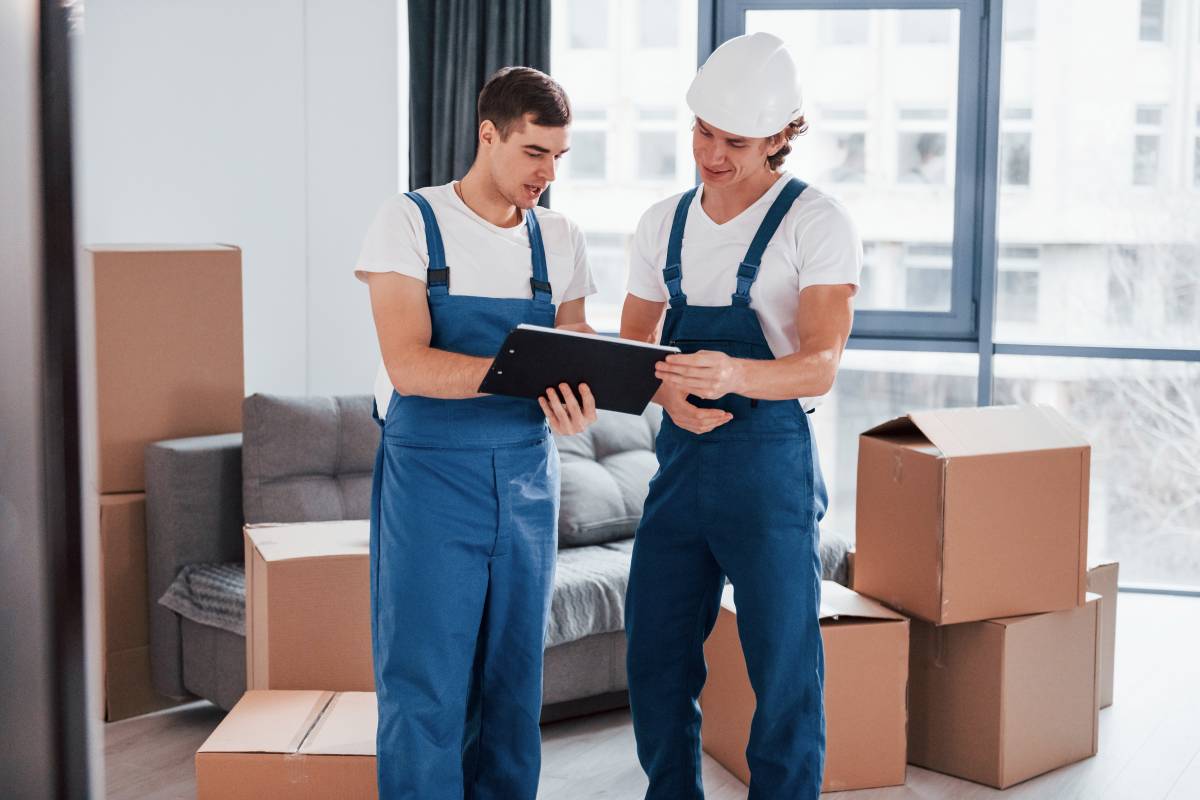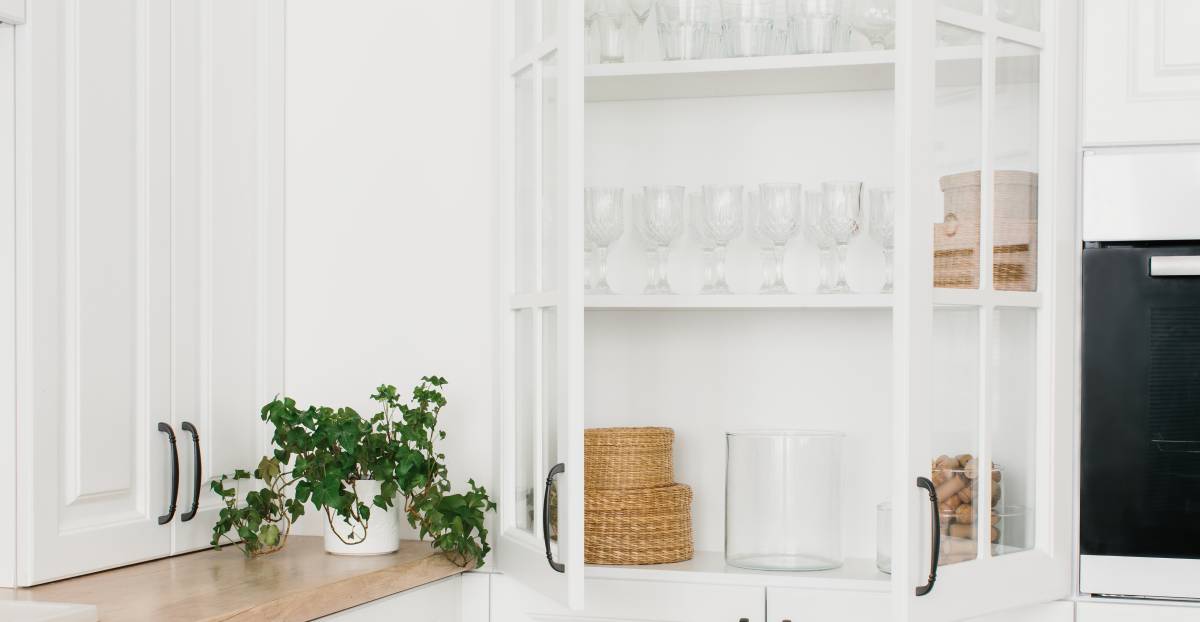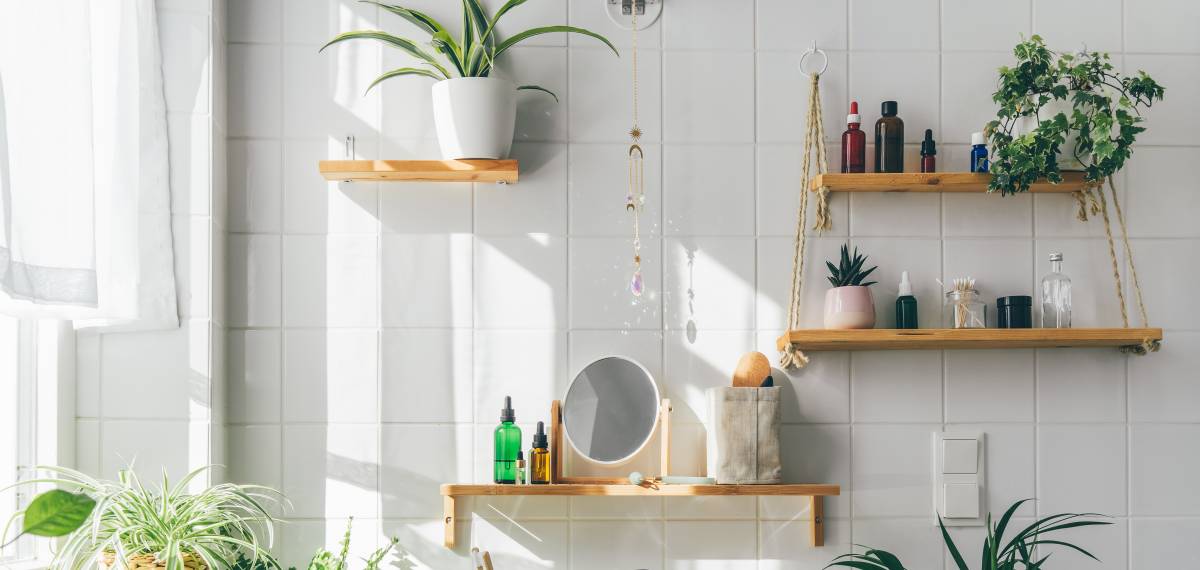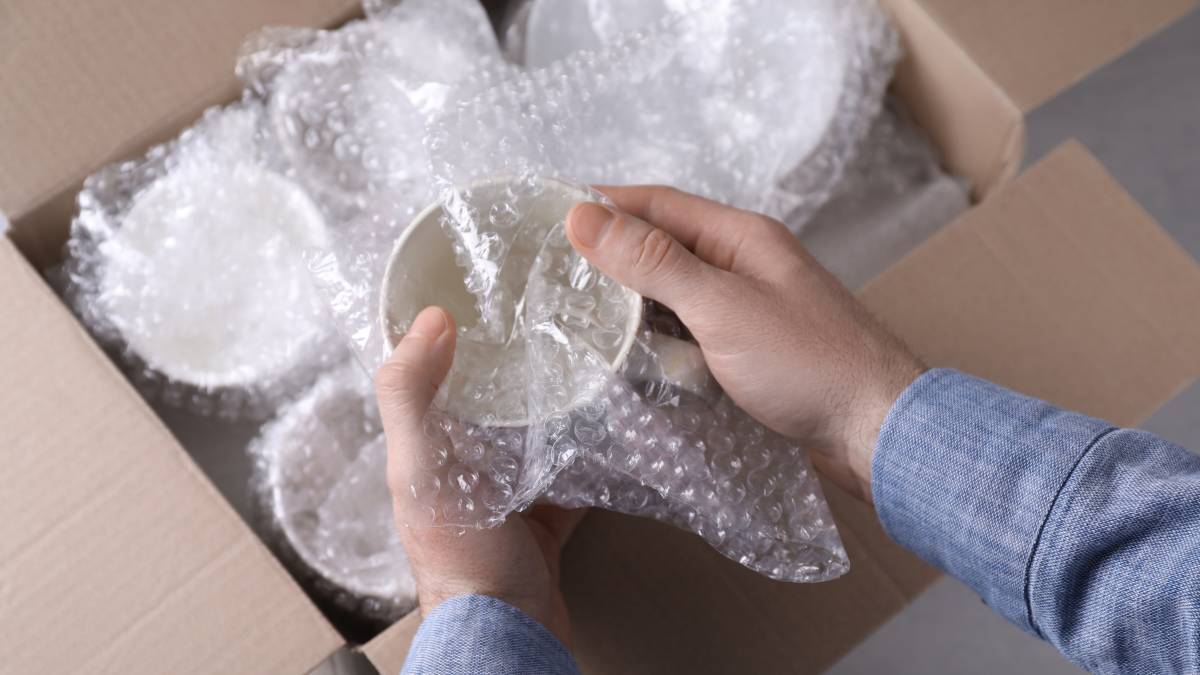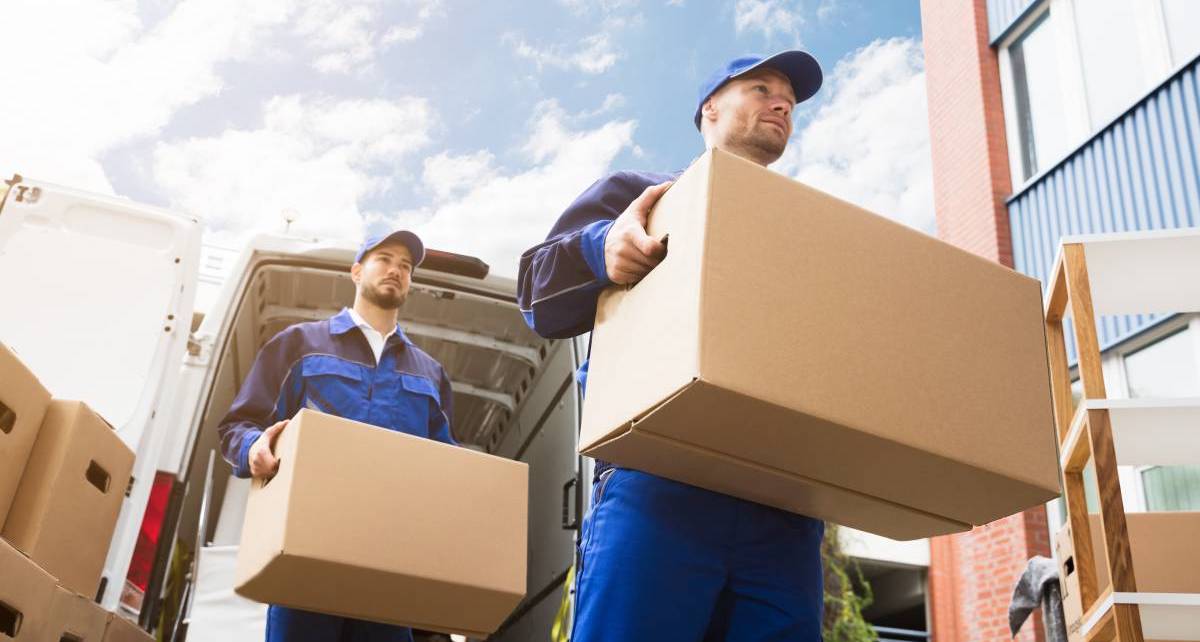- Home/
- Guides/
- Long Distance Movers/
- Long Distance Moving Tips

Packing, planning, and more: 18+ Long distance moving tips you can't miss
Read our essential tips to ensure a smooth transition to your new home!
Get moving helpLast Updated on
While relocation can be tedious, moving long distances has a few more considerations. For example, bringing pets or large items like furniture and appliances complicates things. Whether moving across the country or internationally, the best way to move long distance is to be prepared.
Our long-distance moving tips cover what you must do before, during, and after your moving day. Scroll down to learn more!
Before the move
1. Make a plan

The most critical step is to create a plan for your move. This includes thinking through how to pack your belongings and being informed about your destination. Gather details about local vehicle laws and any regulations that may apply at your new place of residence.
If you’re moving with a pet, comply with vaccination, licensing policies, and other pet transport guidelines, like limits on multiple pets. If you’re moving to a new country, research how to get your car shipped to move around within the first few days without a hassle.
The layout of your new digs can also significantly impact your packing and moving plan. For example, if you’re moving from a two-storey house to an apartment complex, you may need more downsizing.
To get a handle on all the steps involved, create a long-distance moving checklist you can tick off as you go along.
2. Stick to a schedule
Recognize that packing takes time, and you want to avoid as many last-minute packing changes as possible. Set a schedule, stick to it, and start as early as possible.
Create your plan well ahead of your move date so you have time to stay on top of moving requirements, solicit multiple quotes from movers, and buy essential packing materials. Getting these done will make your packing and moving process more efficient (and less stressful).
3. Make an inventory list

Take stock of the belongings that you want to move. While this will mean going through all your stuff, it will save you time on your actual move, as you can refer to your list to see if everything is in place. Long-distance moves might mean your things don’t arrive all simultaneously, so this step ensures nothing is lost.
4. Keep key documents updated
Switching addresses entails tons of paperwork, so it’s best to kick this off early. Key documents like your driver’s license, passport, and other registration should be updated before you relocate permanently.
5. Downsize with a system
Moving is an excellent opportunity to downsize—why pay for transporting things that no longer serve you? And while you may be tempted to junk items you don’t need anymore, it is best to have a system. For example, lump your belongings into five categories:
Items to keep.
Items you use often.
Items to sell.
Items to give away.
Items to throw away.
6. Have packing materials readily stocked

Once you know what items to transport, you can focus on getting the appropriate materials. You may need to purchase the following:
Boxes
Crates
Packaging tape
Bubble and shrink wrap
Ziploc bags
Blankets and pads
Markers
Extra tip: Keep in mind that while, generally, upcycling is good, avoid using secondhand or cheap boxes for your move. You’ll want to use the most robust boxes you can find to guarantee that your things stay intact throughout the trip. You might even want to consider using plastic tubs or bins—much better if they’re clear! This takes a little bit of the guesswork out of unpacking.
7. Find a reliable mover
As early as possible, consult with moving companies to get in-home estimates. Do this at least a month before you move and get estimates from at least three companies to easily compare rates. This will help you find the best possible mover.
Once you land on a mover you’re happy with, you can ask them about more specific policies, like what items they can and cannot move long-distance.
8. Consider insurance
It may be an extra precaution, but you can consider purchasing moving insurance. If you already have home and auto insurance, contact your agent to see what it covers. Consider additional coverage, especially if you have high-value items.
Extra tip: The insurance you get from removal companies is usually limited. Ask your removalist about this as well.
While packing
9. Break down larger items

You’ll need to pack up your entire home, which can be daunting. However, if you’re taking large furniture, such as bookshelves, tables, desks, and bed frames, disassembling them will make it easier to move. Large furniture can be very bulky for moving vans or trucks, so you can save space by taking them apart. This way, it’s less likely they’ll also get scuffed during transport.
Extra tip: Don’t lose any small pieces! Keep screws, nuts, and bolts in a Ziploc bag and label what they’re for.
10. Separate a container for immediate needs
When you get to your new place, the last thing you want is scrambling for a dinner plate and utensils or toiletries. While packing, keep a container ready for things you’ll need until the last minute at your old place and right away when you arrive.
Extra tip: A great packing tip for moving across the country is to have an overnight bag you’ll take on the trip. Bring toilet paper, a first aid kit with your meds, a change of clothes, and some essentials for your pet if you’re moving with a pet.
11. Don’t rush the process
Take your time while packing to minimize damage to your belongings. Wrap fragile items in blankets or bubble wrap—you can even use socks, towels, and clothes for extra cushion. Avoid extra space and keep everything snug. You can “nest” your items using wrapping paper or newspaper.
12. Take advantage of existing containers
Quite literally—pack your things inside your other things. Pack rolled-up clothes inside drawers and use shrink wrap to keep them in place while moving. If you’re taking luggage, you can also use it to carry clothing or smaller items. Just try not to fill them to the brim to keep them manageable for movers.
13. Be strategic
Consider packing your things by area or room. Think about your new home as well—where do you have room, and where do you need to restrict space? For instance, you might have an additional bathroom to direct your lesser-used products and fixtures. Reference your inventory list to streamline your packing.
Also, think about keeping your boxes and containers at a manageable weight. This means neither packing them too heavy nor too light, but just enough that items are secure and easily transported.
14. Label like crazy

Don’t be conservative with labels—the clearer you can make them, the better. Add labels to every box, and include details like which room it’s meant to go to, what it contains, plus any special instructions.
Extra tip: As an extra precaution, you should put a sticker label with your name and contact details on certain boxes in case they get lost.
During the move
15. Opt for an off-season move
Demand for movers is higher in summer, so you can likely get better rates in spring or early fall. People also tend to move toward month-end, so setting your move date mid-month may mean less competition and lower fees. You can also choose a weekday move.
16. Ready move-in day requirements

So that you don’t get surprised by additional fees or arrangements, consult your removal company. You want parking space for moving trucks—if there’s none, you may be charged extra to transfer your boxes to a smaller vehicle. If you move to a building, you may also need to reserve a freight elevator.
17. Load the heaviest items at the bottom
The main thing to remember is to have the weight evenly distributed. Your movers should build a foundation with the heaviest items at the bottom and layer lighter ones at the top. Check that your movers do this and use up as much space in the van or truck.
18. Check that everything is secure and safe
You may want the extra precaution of having your belongings strapped down with rope. Also, consider using flattened cardboard boxes to create barriers and prevent things from falling around in transit. Finally, ensure your movers use a top-quality, sturdy lock to secure your belongings.
Don’t sweat the distance
With these cross-country moving tips, you’re now all set! While it takes a lot of work, the above steps will make your move day smoother and relieve stress. But if you’re still unsure how to move long distance, you can call for help. Reliable movers can give you the support you need. Find a long-distance mover on Airtasker today.
FAQs on long-distance moving
Don’t start your move-in preparations too late—generally, the earlier, the better. Additionally, you should not take prohibited items. Check with your removalists to know what not to move long distance.
It depends. Smaller items may be more easily replaced, but buying new things may cost more than you intend. It is best to downsize to minimize costs.
If you want lower fees, you’ll likely be able to get better deals in spring or early autumn—September through April.
Yes, you can!
Many people choose to take their shed with them when moving long-distance, especially if it’s a valuable storage structure or custom-built. However, there are a few things to consider:
Size and condition of the shed
– Larger or older sheds may need to be partially dismantled before transport.
Permits and transport regulations
– Long-distance moves may require travel permits or adherence to transport size restrictions, especially when crossing state lines.
Professional assistance
– Hiring shed moving companies near you or storage building movers is recommended to safely load, transport, and unload your shed at the new location.
Cost
– The cost to move a shed long-distance varies based on distance, access, and the need for equipment or special handling.
Planning ahead with the help of a shed mover near you ensures your shed arrives safely — just like the rest of your belongings.
Find long distance movers, fast
Find a long distance mover
Related articles

A guide to becoming a mover
Read more

How much do movers make?
Read more

Moving out of state checklist
Read more

How to move a refrigerator
Read more

The ultimate packing and moving list
Read more

How to move a vending machine
Read more

How to pack artwork for moving
Read more

How to pack bedding for moving
Read more

How to move a pool table
Read more

How to pack books for moving
Read more

How to move a shed
Read more

How to pack kitchen items
Read more
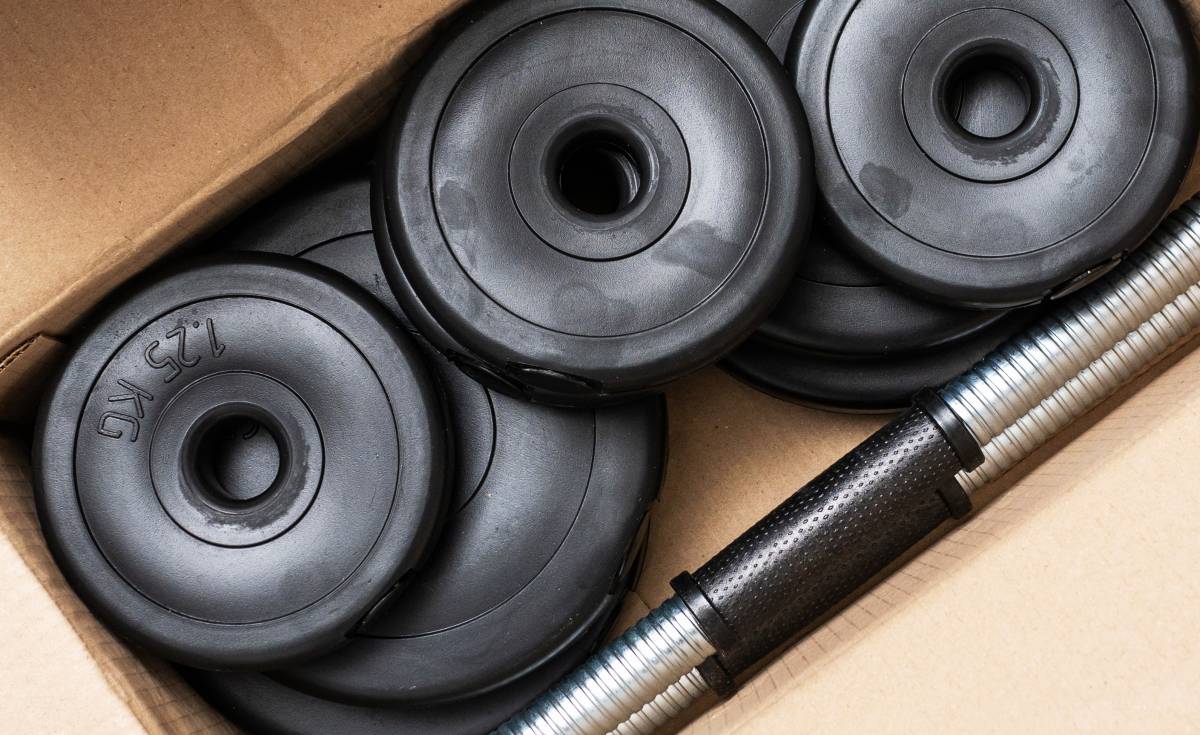
How to move gym equipment safely
Read more

How to pack a moving truck
Read more

Moving interstate checklist
Read more

Where to get moving boxes for free
Read more

What movers won’t move
Read more

How to wrap furniture for moving
Read more

How to move a pinball machine
Read more

How to move a washing machine
Read more

Tips for moving house with kids
Read more
Related price guides

How much does mattress removal cost?
Read more

How much do packers cost?
Read more

How much does a removalist cost?
Read more
